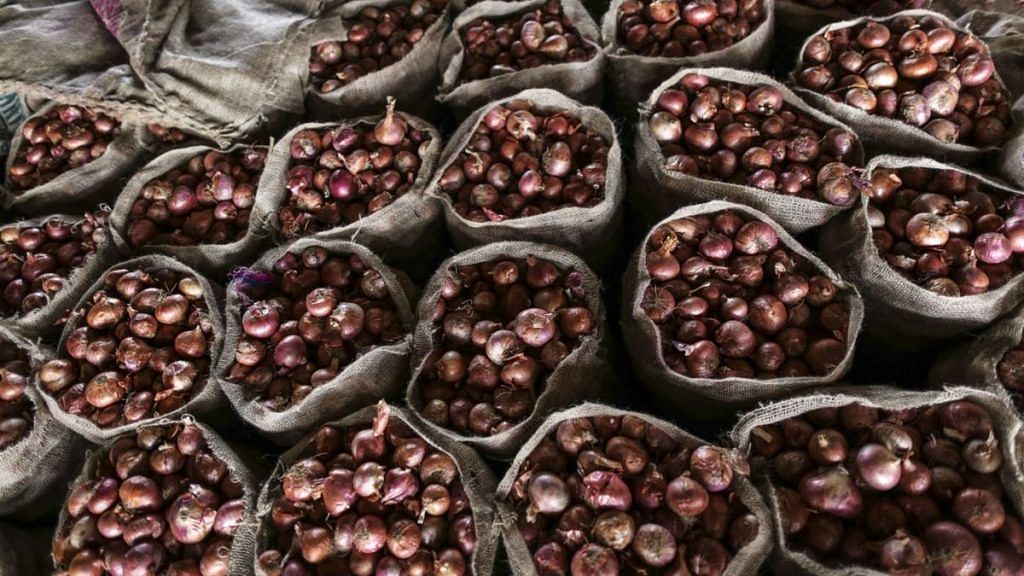New Delhi: After last year’s onion stock shortage that pushed prices into orbit, the government had set itself a target of procuring 1 lakh metric tonnes (MT) to double its buffer stock. However, government agencies have only managed to procure 45,000 MT of the commodity before the monsoons, giving rise to concerns that consumers could be in for another price shock in the so-called lean season between September and December.
An official from the Ministry of Consumer Affairs, Food and Public Distribution, said the buffer stock of onions last year was 56,000 MT, and that after the rains, the produce becomes unfavourable for storage.
“NAFED has only procured 45,000 MT of onion so far, and with approaching rains, more and more produce will become unfavourable for storage and procurement. Hence, it’s highly unlikely that the procurement target will be met this year, as only 20,000-25,000 MT more onions can be procured until the end of July,” the official said.
Also read: This is how India can make sure onions are available throughout the year and at good price
What happened last year
NAFED — the National Agricultural Cooperative Marketing Federation of India — procures onion at market prices, with most of the procurement occurring in the major onion-producing states of Maharashtra, Gujarat and Madhya Pradesh.
It maintains a buffer stock for stabilising prices in case of a shortage. It also provides farmers with better prices in the event of crashing market prices due to lack of demand, as happened during the Covid-19 lockdown across the country.
Last year, the retail prices of onion went as high as Rs 200 per kg in November-December after the kharif crop sustained damage due to heavy rain. Thereafter, in a bid to bring the prices down, the government released the buffer stock at Rs 23 per kg.
However, this proved insufficient, and the government had to impose a stock limit and an export ban, and later import onions from other countries, to keep prices in check.
Also read: Poor storage, panic imports, govt failures led to 2019 onion crisis. It could happen again
What’s happening this year
Nana Saheb Patil, NAFED’s director in Maharashtra, told ThePrint that the Covid-19 lockdown has had an impact on the procurement process this year.
“The onion crop which is stored in buffer stock is harvested in March-April, and during that time, labour shortage and closure of markets due to the lockdown hit the pace of procurement. Even the Lasalgaon Mandi in Nashik, which is Asia’s largest onion mandi, has been closed for the last four days due to Covid-19 cases,” Patil said.
“After the monsoon strikes, the quality of onion will degrade, which will make it unsuitable for procurement and storage. The possibility of meeting the 1 LMT target is bleak this year,” he added.
Due to sluggish procurement, the wholesale market prices of onion have declined over a week to Rs 1,000 per quintal from Rs 1,850-2,000 per quintal.
Also read: Can India handle frequent onion crisis without fixing its distortionary farm economics?
